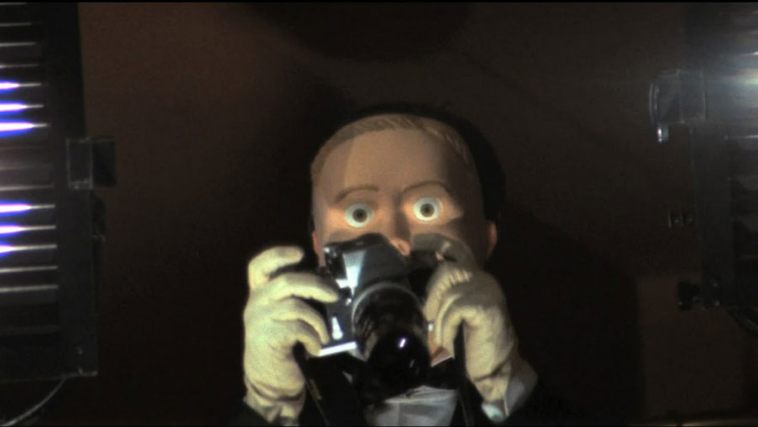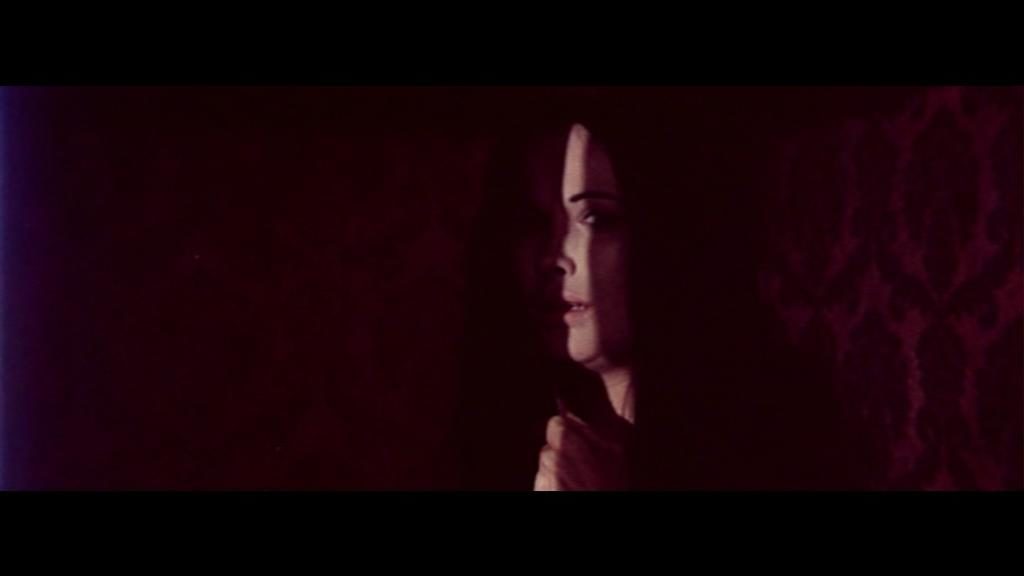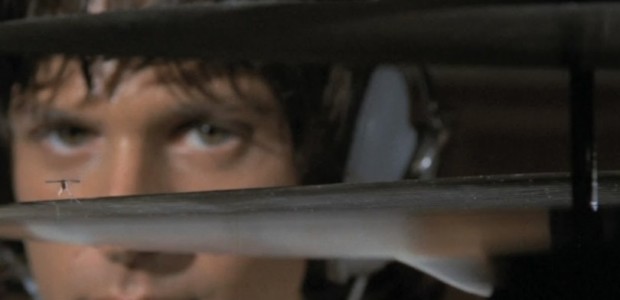
“When the flies start to crawl, so will your flesh…”
With a tagline like that, the 1971 giallo film FOUR FLIES ON GREY VELVET promises a visual feast of horror which only director Dario Argento can deliver. FOUR FLIES is the concluding entry in the director’s so-called “Animal Trilogy,” beginning with THE BIRD WITH THE CRYSTAL PLUMAGE (1970) and THE CAT O’ NINE TAILS (also 1971). It is one of his lesser-known films, a giallo cast in the shadow of his classic DEEP RED made four years later. Argento would switch off between more supernatural horrors like SUSPIRIA, INFERNO, and PHENOMENA, and then occasionally return to the lurid sub-genre with TENEBRAE, THE CARD PLAYER, and TRAUMA, amongst others. It isn’t top-tier Argento, which isn’t necessarily an insult given the highs that the filmmaker has hit in his long career, but FOUR FLIES ON GREY VELVET still showcases the maestro’s command of aesthetics and sound to produce some thrilling sequences.

Roberto (Michael Brandon) is a drummer in a rock band who begins receiving mysterious phone calls. Soon, like most Argento characters, he begins being followed by a stranger. Only this time, Roberto confronts this shadowy figure—but in the scuffle, the stranger is apparently stabbed and killed. Roberto flees, but the next day he receives an envelope with photos of him killing the man. This ends up becoming part of a (standardly giallo) labyrinthine plot as Roberto realizes that someone is killing all his friends and trying to frame him.

The film’s opening credits cut between the image of a heart pumping atop a black title card and Roberto’s jam session as seen through the point of view of his drums—the beginning of Argento’s repeated use of fractured imagery that permeates the film. Many of the director’s signature flourishes are on display: inventive use of locations, stark lighting, creative camera angles, and an ongoing sense of dread and fear, especially when the killer wears an almost pig-like mask.

The film plays identity, those adopted and assumed and what hides behind masks (and even cameras). One way the duality emerges is through homoerotic subtext between Roberto and private investigator Arrosio (Jean-Pierre Marielle), a flamboyantly gay caricature who enjoys baiting the young drummer. Arrosio is certainly not a progressive or representative character, mainly operating as unfortunate comic relief, but he does add to this idea of schisms between perception and reality; between who people say they are and what face they are hiding. Of course, after a scene of Arrosio flirting with a local landlord, he is murdered inside a train station because certain tropes existed in Italy even in 1971.
Even if the script is a bit wonky, with several giallo standards being checked off and convoluted elements leading to a seemingly arbitrary conclusion, Argento finds ways to make the visuals stand out in powerful ways. FOUR FLIES ON GREY VELVET features Argento’s evocative use of montage as well. As seen in the trailer above, that frenetic pan inside an asylum’s cell immerses the viewer into the killer’s insanity while a muggy voice (“I wanted a son, not a weakling!” and “You get hit once, you hit back twice!”) lets you into his haunted thoughts. Another innovative and unique visual component in the film is the use of a high-speed camera to follow a bullet’s trajectory at 1,000 frames per second. Not exactly Ang Lee or Peter Jackson, but certainly gigantic cinematic shoulders on which those filmmakers are standing upon.

As with most gialli, or at least the best ones, FOUR FLIES ON GREY VELVET has a hypnotic and memorable score. Originally, the rock band Deep Purple was going to score the film, but due to scheduling conflicts, those duties went instead to Ennio Morricone, who then had a major argument with Argento about some pieces of music the director cut out of the film. As a result, they didn’t work together again for more than 25 years (the fairly good but also icky because Argento cast his daughter, Asia, film, THE STENDAHL SYNDROME).

FOUR FLIES ON GREY VELVET is an effective feast of senses that delivers all that gialli promise: insanity, blood, intrigue, subterfuge, violence, bizarre characters and/or motivations, impressive visuals, and mesmerizing music. It also stands as a look inside the creative mind of a legendary director on the brink of cementing his status in a sub-genre he helped build before moving on to even more abstract and impressive projects.
Tags: dario argento, Deep Purple, Deep Red, Ennio Morricone, Francine Racette, Gialli, Giallo, Horror, Italian, Italian Horror Films, Italy, Jean-Pierre Marielle, luigi cozzi, Mario Foglietti, Michael Brandon, Murder Mystery, Rock, Rocktoberfest 2019, The Bird With the Crystal Plumage, THE CAT O' NINE TAILS, The Stendahl Syndrome


No Comments